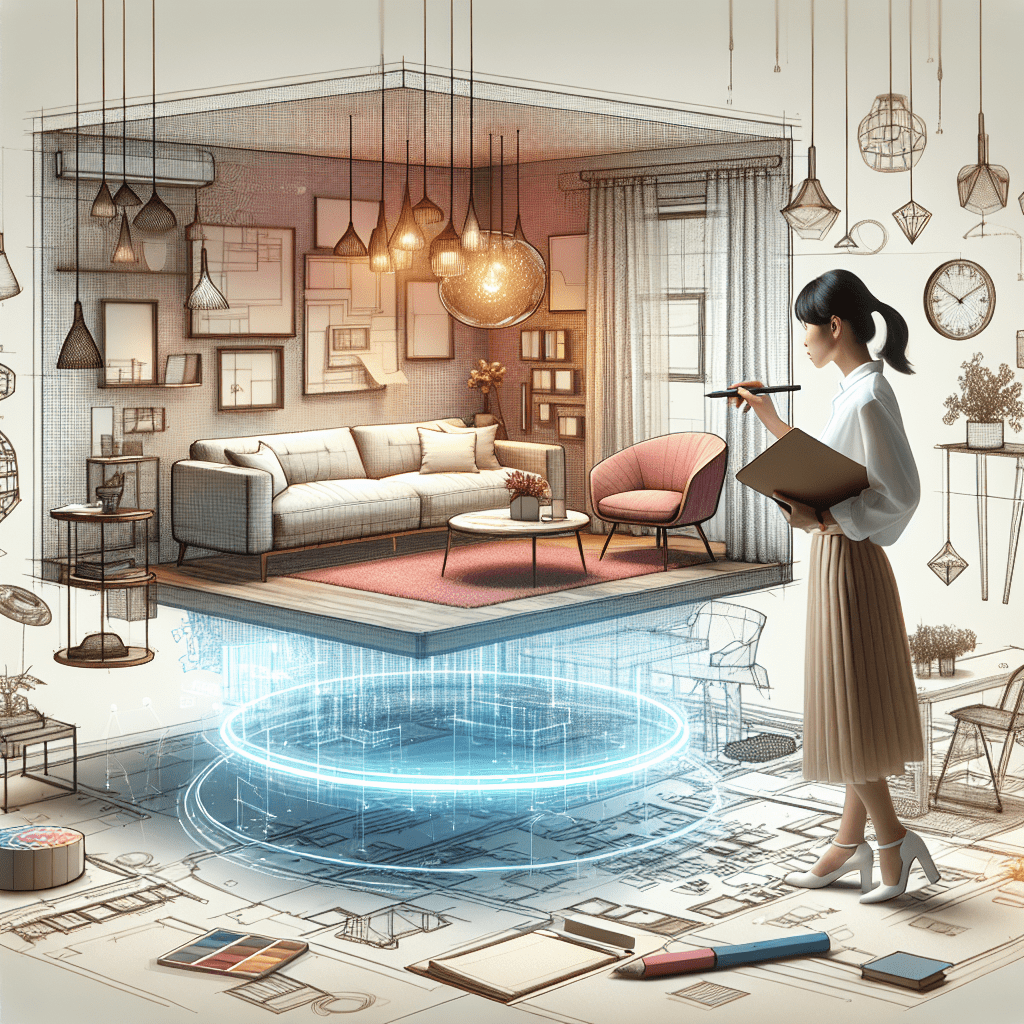Interior designers are the creative minds behind transforming empty rooms into beautiful spaces that reflect the personality and style of their clients. They work with colors, textures, furniture, and décor to create a cohesive and aesthetically pleasing environment. Let’s take a closer look at what goes on in the mind of an interior designer and how they bring spaces to life.
The Creative Process
Interior designers begin by meeting with their clients to understand their needs, preferences, and budget. They then create a design concept that includes color schemes, furniture layout, and decorative elements. They use computer-aided design (CAD) software to create virtual 3D models of the space to help the client visualize the final result.
Once the design concept is approved, interior designers work on selecting furniture, fabrics, paint colors, and décor items that will bring the space to life. They pay attention to every detail, from the lighting fixtures to the drapes, to create a harmonious and cohesive look.
The Role of Inspiration
Interior designers draw inspiration from a variety of sources, including architecture, fashion, art, and nature. They keep up with the latest design trends and attend trade shows and exhibitions to stay informed about new products and materials. They also work closely with suppliers, contractors, and other professionals to ensure that the design plan is executed smoothly and efficiently.
Some interior designers have a signature style that sets them apart from others. They may specialize in a particular design aesthetic, such as modern, traditional, or minimalist. Whatever their style, interior designers are adept at translating their clients’ visions into reality.
The Importance of Functionality
While aesthetics are important, interior designers also prioritize functionality. They consider how the space will be used and design it to be both beautiful and practical. They pay attention to traffic flow, storage solutions, and ergonomic considerations to ensure that the space is not only visually appealing but also comfortable and functional.
Interior designers also take into account the client’s lifestyle and habits when designing a space. For example, if a client enjoys entertaining, they may create an open-plan layout with plenty of seating and dining space. If a client works from home, they may design a home office that is conducive to productivity and creativity.
Conclusion
Interior designers are the creative minds behind transforming empty rooms into beautiful and functional spaces that reflect the personality and style of their clients. They draw inspiration from a variety of sources and work closely with clients, suppliers, and other professionals to bring their design visions to life. By combining aesthetics and functionality, interior designers create spaces that are not only visually appealing but also practical and comfortable.
FAQs
What qualifications do interior designers have?
Most interior designers have a bachelor’s degree in Interior Design or a related field. They may also have certifications or licenses, depending on the state or country where they work.
How much does it cost to hire an interior designer?
Costs vary depending on the designer’s experience, location, and scope of work. Some interior designers charge a flat fee, while others charge by the hour or as a percentage of the total project cost.
How long does it take to complete a design project?
The timeline for a design project varies depending on the size and complexity of the space. Some projects can be completed in a few weeks, while others may take several months to finish.
TIP:
When working with an interior designer, be open to their suggestions and trust their expertise. Remember that they are professionals with years of experience in creating beautiful and functional spaces. Communication is key, so make sure to voice your preferences and concerns throughout the design process.
#Mind #Interior #Designer #Bring #Spaces #Life
